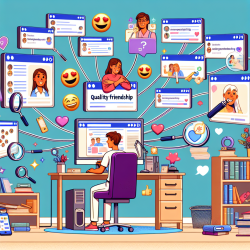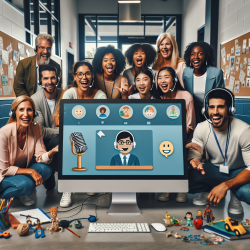Introduction
In today's digital age, adolescents are increasingly engaging in digital social multitasking (DSMT), a behavior that involves using technology during face-to-face interactions. This phenomenon has sparked interest among researchers and practitioners alike, particularly regarding its implications for adolescents' psychosocial well-being. A recent study titled "Digital Social Multitasking (DSMT), Friendship Quality, and Basic Psychological Needs Satisfaction Among Adolescents: Perceptions as Mediators" offers valuable insights into both the positive and negative effects of DSMT on adolescents. This blog aims to guide practitioners in leveraging these insights to improve their skills and outcomes for children.
Understanding the Research
The study explored how DSMT impacts adolescents' friendship quality and the satisfaction of basic psychological needs, such as autonomy, competence, and relatedness. The researchers found that while DSMT can lead to perceived distractions and dismissiveness, it also offers potential benefits. Adolescents reported experiencing greater perceived efficiency, connection, and information access, which in turn contributed to better friendship quality and psychological needs satisfaction.
Key Findings and Implications for Practitioners
- Balanced Perspective: The study highlights the importance of adopting a balanced view of DSMT. While acknowledging the potential negative impacts, practitioners should also recognize the positive aspects, such as enhanced connection and efficiency, which can contribute to adolescents' well-being.
- Focus on Perceptions: Adolescents' perceptions of DSMT play a crucial role in determining its impact. Practitioners should focus on understanding and addressing these perceptions to foster positive outcomes. Encouraging adolescents to reflect on their multitasking behaviors and perceptions can be a valuable intervention strategy.
- Promoting Positive Perceptions: Practitioners can guide adolescents to engage in DSMT in ways that enhance positive perceptions. This includes encouraging shared activities and collaborative multitasking with peers, which can strengthen friendship quality and satisfy psychological needs.
- Addressing Negative Perceptions: While promoting positive aspects, it is equally important to address negative perceptions such as distraction and dismissiveness. Practitioners can work with adolescents to develop strategies for managing distractions and maintaining focus during interactions.
Encouraging Further Research
While the study provides valuable insights, it also opens avenues for further research. Practitioners are encouraged to explore additional factors that may influence the impact of DSMT, such as cultural differences, individual differences in multitasking abilities, and the role of parental guidance. By contributing to ongoing research, practitioners can help refine strategies for supporting adolescents in the digital age.
Conclusion
Digital social multitasking is a complex behavior with both positive and negative implications for adolescents. By understanding and leveraging the insights from recent research, practitioners can enhance their skills and create better outcomes for children. A balanced approach that considers both the risks and opportunities of DSMT is essential for guiding adolescents in using technology adaptively.
To read the original research paper, please follow this link: Digital Social Multitasking (DSMT), Friendship Quality, and Basic Psychological Needs Satisfaction Among Adolescents: Perceptions as Mediators.










